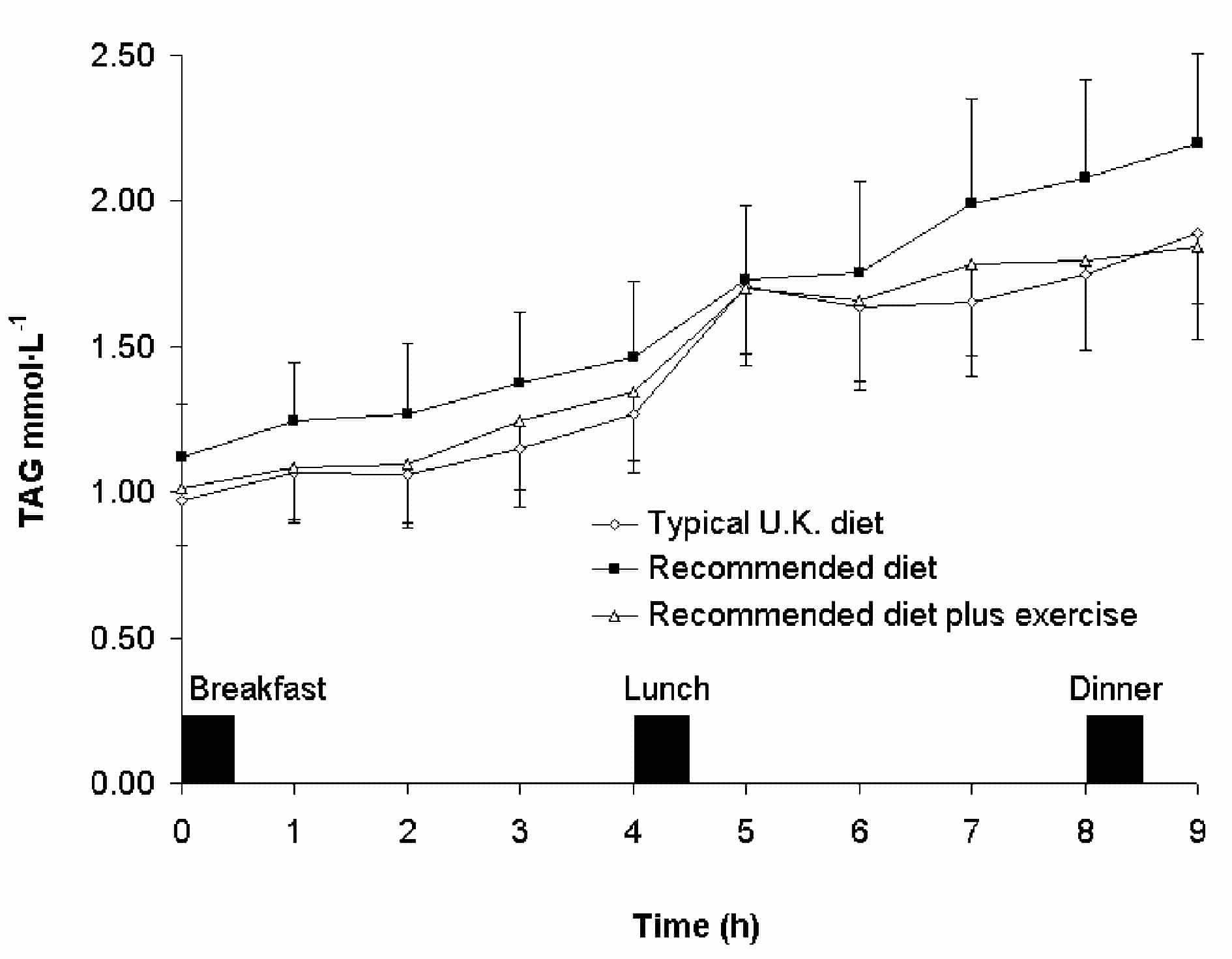Although low-fat high-carbohydrate diets produce a desirable reduction in plasma cholesterol concentration they frequently lead to an undesirable increase in plasma triacylglycerol (TAG) concentration (Parks and Hellerstein 2000). Exercise has been shown to prevent a carbohydrate-induced hypertriacylglycerolaemia, at least in the short term (Koutsari et al. 2001). This suggests that the combination of a high-carbohydrate diet and frequent exercise may be an effective strategy for reducing cardiovascular disease risk. This study tested the hypothesis that adherence to physical activity targets (Pate et al. 1995) would offset the increase in plasma TAG concentration associated with dietary change in line with current recommendations (Krauss et al. 2000).
Six men and 8 women volunteered to participate in this study that was approved by Loughborough University’s Ethical Advisory Committee. The age, height and body mass (mean ± S.E.M.) of the subjects were: 57.3 ± 1.3 yr, 1.70 ± 0.03 m and 76.2 ± 6.0 kg. Subjects underwent 3, 4-day trials in a randomised, balanced design. The trials were: 1) typical UK diet (% energy: 40 % fat, 45 % carbohydrate, 15 % protein), 2) recommended diet (30 % fat, 55 % carbohydrate, 15 % protein), 3) recommended diet plus exercise (30 min of brisk treadmill walking daily). On day 4 of each trial blood samples were collected in the fasted state and for 9-h postprandially via a venous cannula. Breakfast, lunch and an early evening meal were consumed during this 9-h period at 0 h, 4 h and 8 h respectively. TAG concentrations were determined in plasma using an enzymatic assay (Humphreys et al. 1990), with correction for free glycerol. Findings were analysed with a repeated measures ANOVA using SPSS version 11.0 for Windows.
A significant (P < 0.05) trial X time interaction was obtained indicating a steeper increase in plasma TAG concentration over the observation day on the recommended diet compared with the typical UK diet. This effect was countered by exercise (Fig. 1). These data extend previous findings by showing the potential for even small changes in diet and exercise to influence TAG concentrations.
This study was supported by project grant No. PG/2000120 from the British Heart Foundation.

